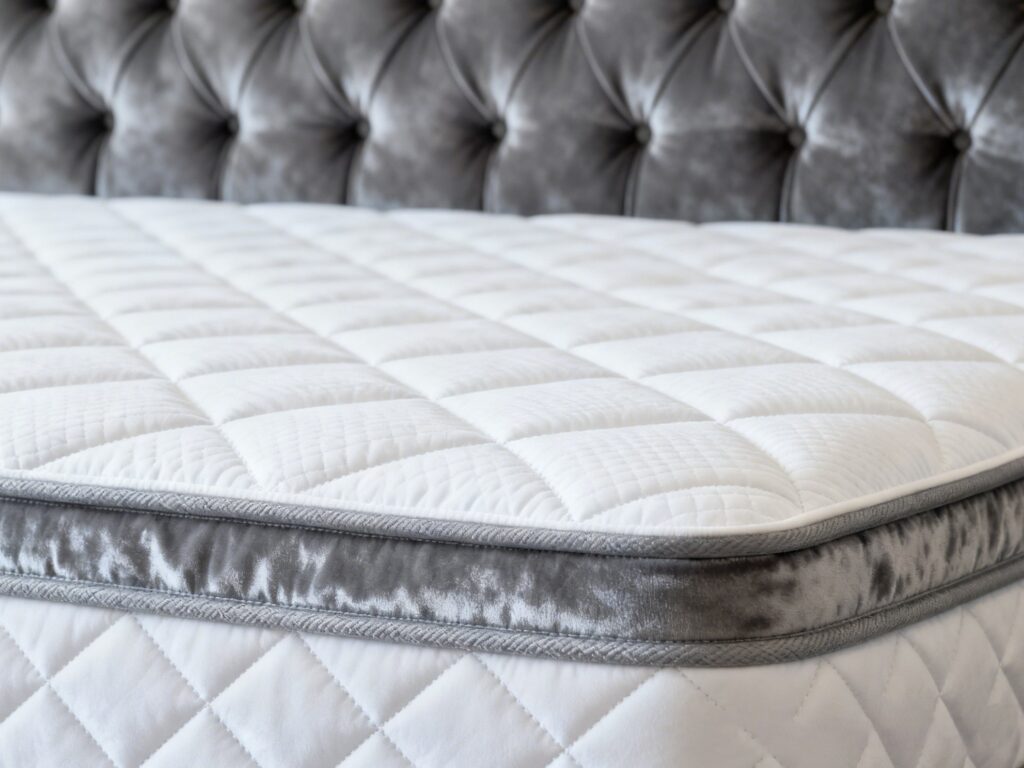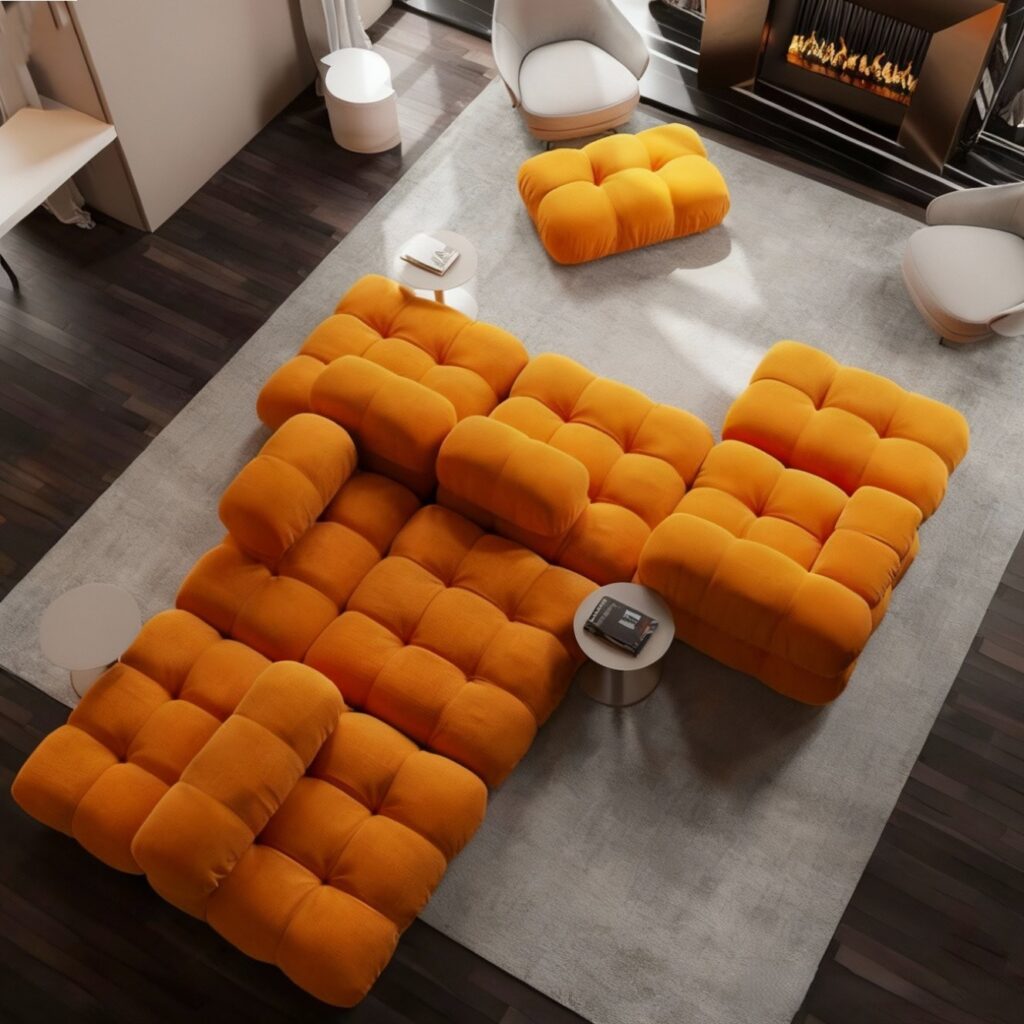The Best Mattress for Back Pain: Firmness vs. Support Science Explained
- lasie
- 2025-10-27

Introduction: Debunking the Common Mattress Myth
When facing the momentous decision of purchasing a new bed, many consumers mistakenly believe that a firm mattress is always the best solution for back pain. This common misconception often leads to disappointment and continued discomfort. The truth is, selecting the right mattress is not about simple firmness; it’s about achieving the perfect balance between surface comfort and core support. This article will scientifically dissect the difference between Firmness (Firmness) and Support (Support), and provide you with a comprehensive, evidence-based roadmap to choose an everlasting mattress that guarantees proper spinal alignment and a pain-free morning.
Part I: The Science Behind Firmness and Support
I.What is Firmness
- 1.Definition: The Initial Comfort LayerFirmness refers to the initial, subjective feeling of the mattress’s top layers—the plushness or hardness perceived when you first lie down. This feel is primarily dictated by the “comfort layer” materials, such as quilting, low-density foam, or soft latex. It is an aesthetic and comfort preference, but not the key factor for long-term spinal health.
- 2.Quantification: H Values and ILS In the industry, firmness is sometimes quantified using an H scale (e.g.,H1to H5, from soft to extra firm) or ILS (Indentation Load Deflection) values, which measure how much pressure is required to compress the foam. Higher ILS values indicate a firmer material.
- 3.The Misconception: High Firmness≠Good SupportThe biggest mistake is confusing these two terms. An overly firm mattress, while feeling supportive at first, often fails to contour to the body’s natural curves. This can push the shoulders and hips out of alignment, creating pressure points and leading to muscle stiffness and chronic back pain, particularly in side sleepers.

II. What is Support ?
- 1.Definition: Spinal Alignment Maintenance Support refers to the fundamental structural integrity of the mattress—its ability to keep the spine in its natural, neutral position regardless of your sleeping position. This critical function is performed by the core support layer (the base of the mattress). Proper support should gently cradle the body while preventing the heaviest parts (hips and torso) from sinking too deeply.
- 2.Core Goal: Keep the Spine in a Straight Line The main objective of a supportive mattress, as advised by chiropractors and orthopedic experts, is to ensure the natural S-curve of your spine is maintained while standing. For side sleepers, this means a perfectly straight line from the head to the tailbone. For back sleepers, it means the lower back (lumbar area) is properly filled and supported, not left suspended.
- 3.Technological Implementation : Superior support is achieved through engineered core materials, such as individually pocketed coils,which offer targeted contouring, or high-density Latex or base foams, which provide robust, durable resilience.
III. The Harm of Inadequate Support: The Root of Back Pain
- The “Hammock Effect” : When a mattress lacks adequate support, your midsection sinks, causing your spine to dip into a U-shape (like a hammock). This forces your spinal muscles and ligaments to strain all night long, resulting in morning stiffness and chronic lumbar pain. This is the classic symptom of a worn-out or poor-quality mattress.
- Increased Pressure Points : A lack of conforming support means your heaviest points—the hips, shoulders, and heels—bear the brunt of your body weight. This restricts blood flow, causes tossing and turning, and prevents you from entering the deep, restorative sleep cycles necessary for true recovery.

Part II: The Purchase Roadmap: Three Factors for Your Perfect Mattress
Choosing the right best mattress for back pain involves a scientific assessment of your personal needs, aligning them with the right core structure.
I. Factor One: Matching Support to Sleep Position
1.Side Sleepers:The Need for Contour
- Requirement: Side sleepers need sufficient surface give (medium to medium-soft firmness) to allow the shoulder and hip to sink slightly, thus keeping the spine straight. The body’s hourglass shape requires a mattress that contours perfectly.
- Recommendation: A medium-soft to medium firmness mattress, often incorporating a thicker layer of high-resilience foam or latex over pocketed coils for optimal pressure relief.
2.Back Sleepers:The Neutral Standard
- Requirement: Back sleepers thrive on uniform support. The mattress must be firm enough to prevent the hips from dipping while soft enough to fill the natural curve of the lower back (lumbar support).
- Recommendation: Medium firmness is the gold standard for back sleepers, ensuring the entire body weight is distributed evenly without any pressure points.
3.Stomach Sleepers:Prioritize Firmness
- Requirement: These sleepers must be cautious about their midsection sinking, which hyperextends the spine. They need a firmer surface to keep the torso elevated and aligned with the shoulders and hips.
- Recommendation: A medium-firm to firm mattress, typically utilizing denser foams or a more robust spring system for maximum stability.

II. Factor Two: The Role of Body Weight
Body weight is a non-negotiable factor in mattress selection, as it determines how deeply you will sink into the mattress.
1.Lightweight Sleepers (< 130lbs / 60 kg):
Need a slightly softer mattress (e.g., Medium-Soft) to activate the comfort layers and receive sufficient body contouring. If the mattress is too firm, it won’t yield to their lighter frame, leading to pressure points.
2.Average Weight Sleepers (130 - 230lbs / 60 - 105 kg):
Most medium firmness (the sweet spot) mattresses provide an excellent balance of pressure relief and support.
3.Heavyweight Sleepers (> 230 lbs / 105 kg):
Require a firm mattress with high-density support materials to prevent premature sagging and ensure deep compression support. Look for high ILS support foams or reinforced spring systems.
III. Factor Three: Selecting the Core Structure Materials
The core materials define the longevity and quality of the everlasting mattress.
1.Latex Mattresses:Strong Support and Resilience Natural latex offers exceptional resilience and strong, buoyant support. It is highly durable and instantly responds to changes in position, making it an excellent choice for those seeking superior bounce and good support.
2.Memory Foam Mattresses:Excellent Pressure Dispersion Memory Foam is famous for its conforming, “hug-like” feel, expertly dispersing pressure. However, its supporting ability is heavily dependent on a high-density foam base or core. Look for high-quality, dense base foam to ensure long-term spinal support.
3.Innerspring / Hybrid Mattresses:Reliable and Versatile Innerspring systems, especially those using Pocketed Coils, offer the most reliable and breathable support. Hybrid models combine the reliable support of individually pocketed coils with the pressure relief of Latex or Memory Foam, offering the best of both worlds.
Part III: Trial and Purchase Process (Avoiding Common Errors)
I. The Importance of an Extended Trial
- Trial Time: A Minimum of 15 Minutes When testing a new bed in a showroom, avoid making a decision in 5 minutes. Your body needs at least 15 minutes to fully relax, allowing you to accurately gauge the deep support and how your hips and shoulders interact with the comfort layers. Ideally, utilize the common 90-day trial period offered by reputable manufacturers to adjust your body to the new bed.
- Test Your Primary Sleep Position Lying on your back for 15 minutes is easy, but you must test the mattress in your typical position—side, back, or stomach. Have a partner check your spine alignment: it should be straight, not dipped.
- Partner Test: Motion Isolation For couples, testing the mattress’s motion isolation is crucial. If you feel every movement your partner makes, the mattress lacks effective movement separation, potentially disrupting your restorative sleep cycles. This is where individually pocketed coils excel.
II. Common Traps to Avoid
1.Brand Over Density : The biggest mistake is prioritizing a famous label over the actual material specifications. Always inquire about the density of the foam layers and the gauge/type of the spring system. High-density base foam (e.g., 2.5 lbs cu ft and above) is essential for long-term support and durability.
2.Ignoring Warranty and Policy : A quality mattress should come with a comprehensive warranty (usually 10+ years). Pay close attention to the definition of “sagging” or “indentation” covered by the warranty. A good manufacturer will guarantee against significant premature dips.
3.Misjudging Luxury : The most expensive or plush mattress is not automatically the most supportive. The best mattress is a scientific construction that perfectly matches your body profile and sleeping style. Don’t mistake pillow-top softness for core support.
Conclusion: Investing in Your Sleep Health
The difference between a restless night and a restorative one often lies in understanding the distinction between firmness and support. Support is the foundation of a healthy spine and the definitive factor in preventing back pain. Firmness is merely the tailored layer of comfort that personalizes your experience. By following this guide—matching your sleep position and body weight to the core structure—you are not just buying a mattress; you are making a crucial investment in your long-term health and well-being.
We invite you to explore our selection of scientifically engineered Hybrid Mattresses and Latex Mattresses designed to provide optimal spinal alignment for every body type. Your journey to a pain-free morning starts here.

you may also like
Cast Aluminum: The Ultimate ROI Investment for Luxury Resorts, Villas, and Hotels
Cast Aluminum: The Ultimate ROI Investment for Luxury Resorts, Villas, and Hotels Table of Contents 1.Shifting the Focus from Initial Cost to Long-Term Value The global hospitality market—especially the luxury sector of resorts, private villas, and high-end hotels—operates under intense pressure to maintain pristine aesthetics while handling non-stop, high-traffic usage. When sourcing outdoor furniture, procurement […]
Modern Minimalist Meets Leather: 5 Design Rules to Avoid the “Old-School” Look
Modern Minimalist Meets Leather: 5 Design Rules to Avoid the “Old-School” Look Table of Contents Introduction: Why Leather Sofas Are Misunderstood Leather sofas have long been a symbol of luxury, comfort, and craftsmanship. However, for many homeowners, they’re often associated with a traditional or even “old-fashioned” look — heavy, dark, and formal. In today’s modern […]


